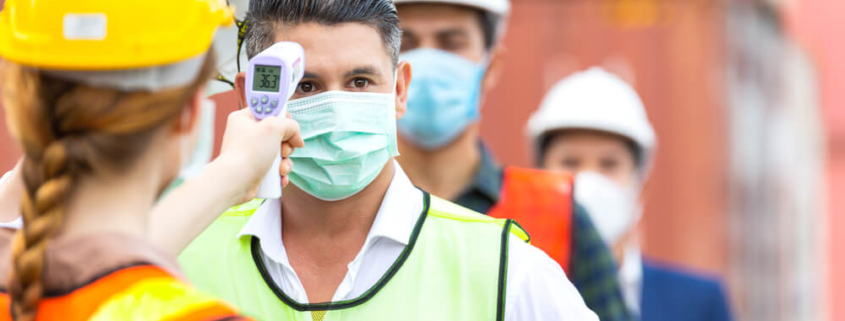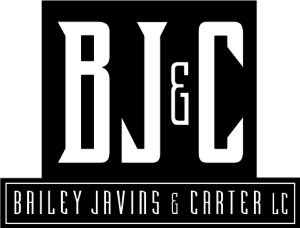OSHA Guidelines on Construction Workers Returning to Work
The COVID-19 pandemic has impacted the lives of millions of Americans, and it will likely have long-term effects on many areas of this nation’s construction industry. While some contractors took a break in the first and second quarters as states issued shelter-in-place orders, others continued with planned construction projects to meet deadlines.
What has changed significantly are the guidelines meant to protect the health and safety of workers in this industry. The Occupational Safety and Health Administration (OSHA) has issued a series of responses to COVID-19 that provide guidance for the construction workforce, including information about possible work-related injuries due to coronavirus exposure. These guidelines are essential considerations as companies either return to work or wish to implement measures to slow the spread of the virus.
Different Construction Work Tasks and Exposure Levels
Not every construction job is the same. Some positions and tasks will create higher levels of exposure to a virus like COVID-19. OSHA has divided construction work into four different risk levels:
- Lower Risk– Tasks allowing workers to stay at least 6 feet apart and involved little contact with visitors, customers, or the public.
- Medium Risk– Tasks requiring less than a 6-foot distance between workers or tasks that require workers to be less than 6 feet away from visitors, customers, or the public.
- High Risk– Tasks involving indoor work, where the area is also occupied by other workers, residents, or customers who are known or suspected to have COVID-19 or where an occupant has shown signs of the virus.
- Very High Risk– This category is not applicable to most construction work tasks.
According to OSHA, the lower risk category of construction is most appropriate at this time. For higher exposure risk levels, companies and contractors may wish to consider delaying the work as well as following OSHA’s guidance to establish a safer work environment.
Appropriate Controls in Construction for Return to Work
Construction businesses can reduce the risk of exposure to COVID-19 by implementing several types of controls.
Engineering Controls
If you must do essential or emergency work in an indoor construction environment where any person is known or suspected to have COVID-19, OSHA recommends that contractors use walls and closed doors, when possible, to create physical work barriers. Another recommendation is to put up plastic barriers when workers must occupy indoor space and be in close contact (under 6 feet) with a known or suspect COVID-19 case.
Since personal protective equipment (PPE) may be in short supply, OSHA recommends that employers periodically re-examine engineering controls and work practices to reduce exposure risks and the need for PPE. These same measures can reduce employee exposure to injuries and illnesses from excess dust and dangerous chemicals.
Administrative Controls
Whenever possible, employers should review and update policies to maintain a safe workplace. These include policies related to:
- Standards– Includes creating standard operating procedures that follow, OSHA, CDC, state, and local guidelines to prevent the spread of the virus.
- Training– Refers to training for the workers on the spread of the infection in their areas.
- Screening– Evaluating each job in terms of risk and potential exposure before allowing workers onto a job site.
COVID-19 Guidance for Construction Workers
The guidance from OSHA for construction work is not a regulation or standard. The recommendations are meant to help employers create a workplace that will have a lower risk of hazards that will cause injury and death. With respect to COVID-19, OSHA is recommending that construction firms:
- Allow workers to wear a mask over their nose and mouth to prevent the spread of the virus.
- Encourage respiratory etiquette, such as covering sneezes and coughs.
- Train workers on the proper use of PPE.
- Encourage workers to remain home if they are sick.
- Counsel workers to avoid physical contact with others, maintaining at least a 6-foot distance from other workers, contractors, and visitors whenever possible. Workers should also socially distance when inside construction trailers.
- Promote frequent hand washing and provide access to alcohol-based sanitizer if immediate access to soap and water is not feasible.
- If equipment or tools must be shared, instruct workers on how to sanitize them between use.
- Use only EPA-approved cleaning chemicals that have label listings for COVID-19.
- Clean and disinfect common spaces, such as breakrooms and bathrooms, regularly, as well as frequently touched items like door pulls.
- Limit in-person meetings in terms of time and the number of people in attendance.
- Encourage workers to report any health or safety concerns.
Is COVID-19 a Work-Related Injury?
Most Americans are doing the best they can to stay healthy and safe during these trying times. And many employers are taking recommended precautions to avoid the spread of COVID-19 among workers. But what happens when a construction worker does get the infection and believes they were exposed in the workplace?
When an illness comes from an occupational exposure, it is generally covered by workers’ compensation. But with a virus that is transmitted through the air and that has an incubation period of up to 14 days, it can be difficult to establish that an infection or exposure took place in the workplace as opposed to someplace else.
If you are not an “essential worker,” there currently is not a presumption of compensability when it comes to contracting the coronavirus. That doesn’t mean that no benefits will be available to you or that things won’t change since the situation remains incredibly fluid.
Exposed to COVID-19 in the Workplace? Contact Us!
Some people must continue working despite hazardous conditions. A global pandemic is an unprecedented situation, and the laws are still being tested when it comes to coverage. What hasn’t changed is that employers are responsible for providing a safe and healthy working environment.
If you believe you contracted COVID-19 in the workplace, you may be entitled to compensation. At Bailey, Javins & Carter, L.C., our experienced workplace injury attorneys fight for the rights of injured workers, and we would be happy to review your situation.
Contact our office today at 678-981-5370 to schedule a free consultation.

 OSHA Covid Guidelines
OSHA Covid Guidelines
 Independent Contractor Injuries
Independent Contractor Injuries When Can you Sue Outside of Workers' Comp for a Workplace Injury
When Can you Sue Outside of Workers' Comp for a Workplace Injury